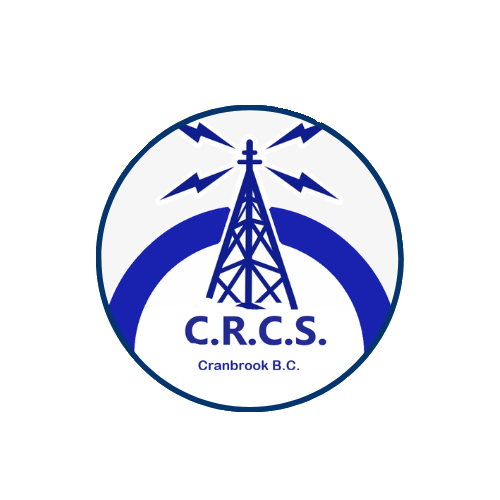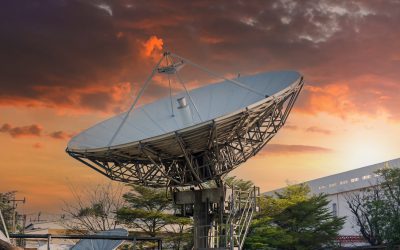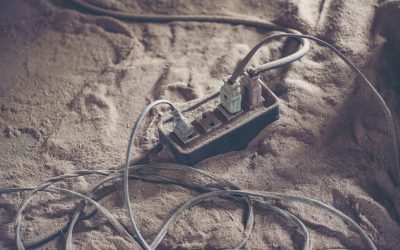Portable Power Solutions for Winter Field Days: Reliable Energy for Cold-Weather Ham Operations
Winter Field Day is one of the most anticipated events for amateur radio operators who love a challenge. There’s nothing quite like braving the cold, setting up a station in a snowy field, and proving your skills when the elements are against you. But as any seasoned ham knows, winter brings unique hurdles—especially when it comes to keeping your gear powered up and running smoothly. If you want to stay on the air and log those winter contacts, choosing the right portable power solutions is not just important—it’s essential.
At the Cranbrook Radio Club Society (CRCS), our members have tested their rigs in freezing temperatures, blizzards, and remote locations. We know that a reliable power source can make the difference between a successful Winter Field Day and an early QRT. In this guide, we’ll cover everything you need to know about portable power solutions for cold-weather operations, including battery types, generator safety, solar options, and practical tips for keeping your station running strong when the mercury drops.
Whether you’re a Winter Field Day veteran or planning your first cold-weather activation, read on for expert advice and proven strategies from the CRCS team.
Why Portable Power Solutions Matter for Winter Field Days
Field Day is all about operating off-grid—testing emergency preparedness, honing portable skills, and having fun outdoors. But winter conditions add a layer of complexity. Cold weather can sap battery performance, make fuel harder to manage, and slow down solar charging. Reliable portable power solutions are the backbone of your winter setup, supporting your radios, laptops, lighting, and even shelter accessories like heated blankets or hot drinks.
In colder environments, you need portable power solutions that:
- Deliver consistent voltage despite low temperatures.
- Are easy to transport and set up in snowy or icy terrain.
- Can withstand moisture, wind, and freezing conditions.
- Offer redundancy and backup options in case one system fails.
Let’s dive into the portable power solutions best suited for Winter Field Day.
Battery Basics: Powering Your Winter Station
Batteries are a favorite portable power solution for field events. They’re quiet, compact, and require minimal setup. But not all batteries are created equal—especially when temperatures drop.
1. Lead-Acid Batteries (AGM and Gel)
Lead-acid batteries have long been a staple for portable operations. AGM (Absorbed Glass Mat) and gel types are sealed, spill-proof, and offer decent performance. Their main advantage is affordability and reliability.
Winter Consideration: Lead-acid batteries lose capacity as temperatures fall. At -20°C, a battery may only deliver half its rated amp-hours. To compensate, size your battery bank larger than you think you’ll need, and keep batteries insulated from direct cold—wrap them in blankets or keep them inside a tent.
2. Lithium-Ion (LiFePO4) Batteries
Lithium Iron Phosphate (LiFePO4) batteries have revolutionized portable power solutions for hams. They’re lightweight, deliver full capacity in cold weather, and have a long cycle life. Most models include a built-in Battery Management System (BMS) for safety.
Winter Consideration: While LiFePO4 batteries perform well in cold, charging them below 0°C can risk damage. Use a battery with low-temperature protection, or warm it up before charging. Store batteries inside insulated containers or keep them close to a heat source.
3. Portable Power Stations
All-in-one portable power stations (Jackery, Goal Zero, Bluetti, etc.) combine lithium batteries, charge controllers, and AC/DC outputs in a single unit. They’re plug-and-play and perfect for mixed loads—radios, laptops, lights, and more.
Winter Consideration: Like LiFePO4 batteries, these units should be protected from freezing. Many models offer LCD displays for monitoring performance, making it easy to track usage in real time.
Generators: Reliable Power When You Need It Most
When batteries aren’t enough, portable generators become the go-to power solution for extended Winter Field Day operations. Gasoline, propane, and dual-fuel models are common among hams.
1. Gasoline Generators
These classic standby generators offer plenty of power for radios, heaters, and even coffee pots. Modern inverter models (Honda EU2000i, Yamaha EF2000iS) are efficient, quiet, and safe for sensitive electronics.
Winter Consideration: Gasoline can gel in extreme cold. Store fuel in insulated containers, and keep generators out of snowdrifts. Always have fresh oil, and run the generator briefly every few hours to prevent carburetor icing.
2. Propane Generators
Propane performs better than gasoline in freezing temperatures and stores cleanly. Dual-fuel generators offer flexibility for longer deployments.
Winter Consideration: Use weather-rated hoses and regulators, and avoid direct exposure to wind and snow. Propane tanks should be kept above ground and out of deep cold to maintain pressure.
3. Safety and Noise Management
Any generator requires safe operation: use carbon monoxide detectors, place the unit outside and downwind, and shield it from precipitation. Portable generator tents or shelters can help.
For minimal QRM and happy neighbors, position generators well away from antennas and operating positions. Use heavy-duty extension cords and ferrite chokes to reduce conducted noise.
Solar Power: Sustainable Portable Power Solutions in Winter
Solar is an increasingly popular portable power solution for field activities, but winter comes with challenges.
1. Solar Panels
High-efficiency solar panels can help recharge batteries during daylight hours. In winter, the sun is lower in the sky and days are shorter—so panel placement is critical.
Winter Consideration: Keep panels free of snow and ice. Angle them steeply to catch low winter sun and allow snow to slide off. Portable folding panels (Renogy, Bioenno, PowerFilm) are easy to transport and deploy.
2. Charge Controllers
MPPT (Maximum Power Point Tracking) controllers optimize solar output, especially in low-light conditions. Use weatherproof controllers and check connections regularly for moisture ingress.
3. Solar Strategy
Solar works best as a supplemental portable power solution in winter, topping up batteries rather than serving as your primary source. Combine solar with battery banks and generators for redundancy.
Redundancy: The Key to Reliable Portable Power Solutions
In Winter Field Day’s unpredictable conditions, redundancy is your best friend. Experienced hams build their portable power solutions with multiple layers:
- Primary battery bank for radios and logging equipment.
- Backup batteries for critical devices (handhelds, lights).
- Generator for extended loads or recharging.
- Solar panels for supplemental charging and emergencies.
- Power distribution with fuses, meters, and isolation switches.
CRCS Tip: Always bring more capacity than you think you’ll need. Cold weather, unexpected loads, and longer-than-planned operating hours can deplete reserves quickly.
Practical Tips from CRCS: Portable Power Solutions in Action
Our club members have learned a thing or two about keeping stations running through challenging Winter Field Days. Here are their top tips for portable power solutions:
1. Insulate Everything
Wrap batteries in foam, blankets, or specialized battery warmers. Place power stations on insulated mats to keep them off frozen ground.
2. Keep Spares Handy
Bring extra cables, fuses, adapters, and extension cords. Cold weather can make plastic brittle and connections finicky.
3. Monitor Power Usage
Use power meters (Wattmeters, Battery Monitors) to track consumption and remaining charge. Log usage patterns so you can plan for next time.
4. Plan Charging Intervals
Don’t wait for batteries to die. Recharge during daylight or generator runs, and rotate battery banks if possible.
5. Protect Connections
Moisture is a big enemy—seal connectors with dielectric grease or weatherproof tape. Store unused cables in sealed bags.
6. Test Everything Before You Go
Charge batteries fully, run generators for a test cycle, and check solar panel output. Simulate your setup at home to catch issues early.
7. Safety First
Never run generators indoors or in tents. Use CO detectors, keep fuel secure, and always follow manufacturer guidelines.
Sizing Your Portable Power Solutions
How much power do you need for Winter Field Day? Here’s a simple method to estimate your requirements:
- List each device: Radios, laptops, lights, heaters, etc.
- Note power draw: In watts or amps—check manuals or labels.
- Estimate duty cycle: Will your rig be transmitting 50% of the time? Logging 100%?
- Calculate total consumption: Multiply device draw by hours of operation.
- Add a safety margin: Increase calculated amp-hours by 25-50% for cold weather derating.
Example:
- HF radio: 20W receive, 100W transmit, 50% duty cycle, 8 hours = ~560 Wh
- Laptop: 60W, 8 hours = 480 Wh
- LED lights: 5W, 8 hours = 40 Wh
Total: ~1080 Wh (add 50% for cold) = ~1620 Wh
A 100Ah LiFePO4 battery (at 12V, ~1200 Wh) plus a generator or solar backup would cover this load.
Recommended Portable Power Solutions for Winter Field Day
Here are some CRCS-approved options for portable power solutions:
- Bioenno Power 40Ah/100Ah LiFePO4 Batteries: Lightweight, reliable, and cold-tolerant.
- Jackery Explorer 1000 Power Station: All-in-one AC/DC outputs, easy transport, and LCD monitoring.
- Honda EU2200i Generator: Quiet, efficient, and safe for sensitive radio gear.
- Renogy 100W Folding Solar Panel: Portable and weather-resistant for supplemental charging.
- NOCO Genius Battery Chargers: Safe and effective for topping up lead-acid or LiFePO4 batteries.
Always choose solutions that fit your station size, equipment, and operating style.
Power Up Your Winter Field Day
Winter Field Day is a true test of ham radio skill and resourcefulness. With the right portable power solutions, you can stay on the air, keep your team comfortable, and focus on enjoying the event—not troubleshooting dead batteries or cold fingers.
At CRCS, we believe in preparedness, creativity, and sharing what works. Whether you’re powering a QRP rig or a multi-operator setup, take the time to plan, test, and build redundancy into your portable power solutions. Your contacts—and your comfort—depend on it.
If you have questions or want to share your own winter power strategies, reach out to CRCS or join us at our next club meeting. Here’s to clear signals, warm shacks, and a successful Winter Field Day for all!
73 from Cranbrook Radio Club Society—see you on the (frosty) bands!




